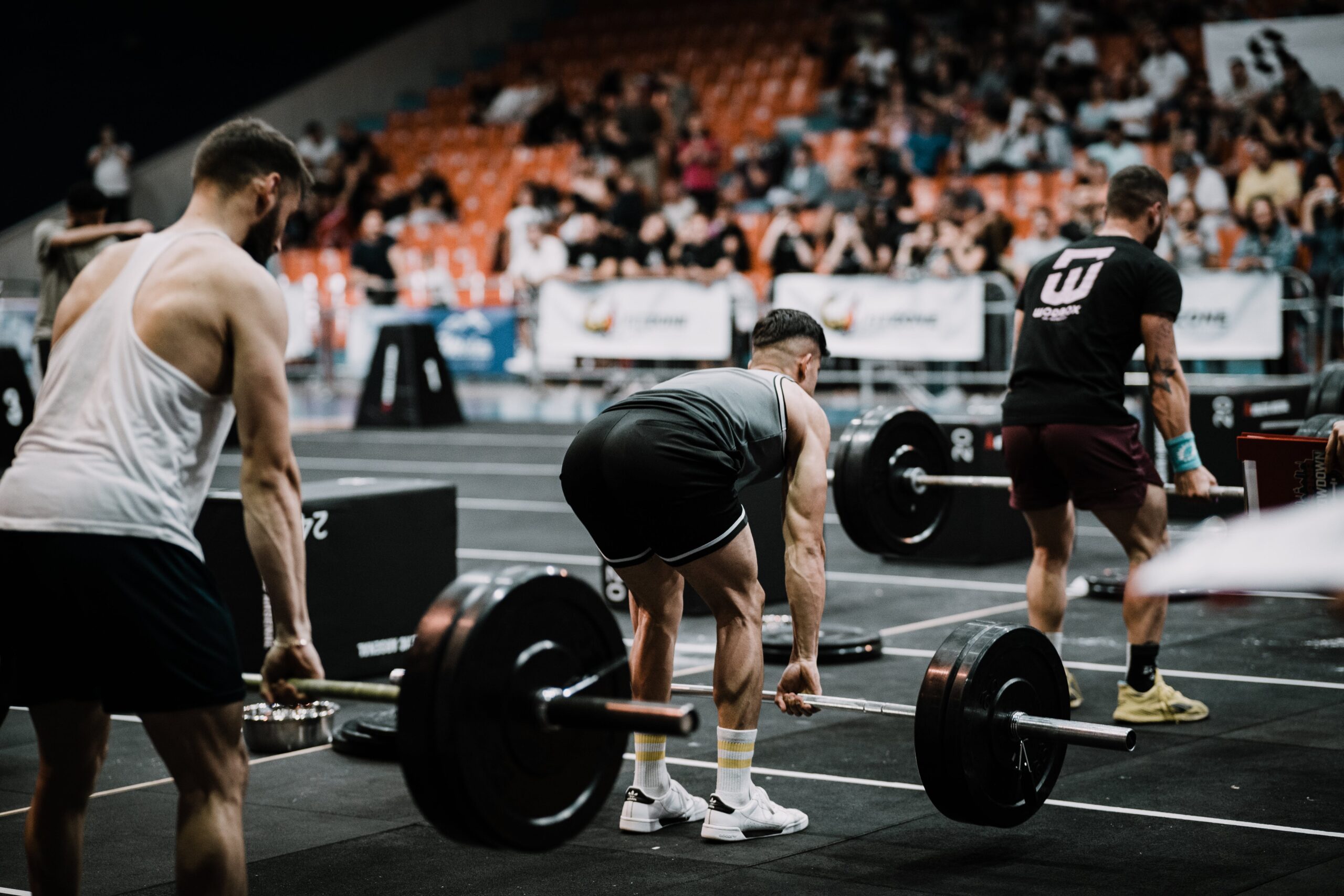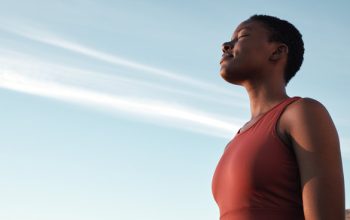
Deadlifts are one of the most popular exercises among weightlifters, but there is a debate about whether they are a back or leg exercise. Some people believe that deadlifts primarily work your back muscles, while others argue that they are more focused on your legs. Understanding the anatomy of a deadlift and how it affects your body can help you decide which muscles are being targeted.
The deadlift is a compound exercise that involves multiple muscle groups, including your back, legs, and core. The primary muscles used during a deadlift are the glutes, hamstrings, and quadriceps, which are all located in your legs. However, deadlifts also work your erector spinae muscles, which run along your spine and support your back. The amount of emphasis placed on each muscle group depends on the specific type of deadlift you are performing.
Key Takeaways
- Deadlifts are a compound exercise that work multiple muscle groups, including your back and legs.
- The primary muscles used during a deadlift are located in your legs, but your back muscles also play a significant role in the movement.
- The type of deadlift you perform will determine which muscle groups are emphasized.
Understanding Deadlifts
Deadlifts are a compound exercise that targets multiple muscle groups, including the legs and the back. It is considered one of the most effective exercises for building strength, muscle mass, and overall fitness.
When you perform a deadlift, you start in a standing position with a barbell on the floor in front of you. You then bend down and grab the bar with both hands, usually with an overhand or mixed grip. From there, you lift the bar off the floor by extending your legs and hips, and then pulling your shoulders back to engage your back muscles.
The deadlift is often categorized as a leg exercise because it primarily targets the muscles in the lower body, such as the quadriceps, hamstrings, and glutes. These muscles are responsible for generating the force needed to lift the weight off the ground. However, the back muscles, including the erector spinae, lats, and traps, also play a significant role in the exercise. They help to stabilize the spine and maintain proper posture throughout the lift.
The conventional deadlift is the most common variation of the exercise and involves lifting the bar from the floor to a standing position. However, there are also other variations of the deadlift, such as the sumo deadlift and the Romanian deadlift, which target different muscle groups and have slightly different techniques.
It’s important to note that deadlifts can be a demanding exercise, both physically and mentally. Proper form and technique are crucial to avoid injury and get the most out of the exercise. It’s recommended that you start with a light weight and gradually increase the weight as you become more comfortable with the movement. Additionally, it’s important to warm up properly before performing deadlifts, and to give your body adequate rest and recovery time between workouts.
Anatomy of a Deadlift
Deadlifts are a compound exercise that work multiple muscle groups simultaneously. The primary muscles used in a deadlift are the glutes, hamstrings, and lower back. However, the exercise also engages the quads, calves, forearms, and upper back muscles.
When performing a deadlift, you start in a standing position with the barbell on the floor in front of you. You then bend down and grip the bar with both hands, keeping your feet shoulder-width apart. From here, you lift the bar off the ground by extending your hips and knees. As you lift the bar, you engage your lower back muscles to keep your spine in a neutral position.
Once you have lifted the bar to the top of your thighs, you pause for a moment before lowering it back down to the ground. Throughout the exercise, it is important to maintain proper form to avoid injury and maximize results.
In addition to targeting multiple muscle groups, deadlifts also provide a number of functional benefits. They improve your overall strength and power, increase your grip strength, and enhance your ability to lift heavy objects in everyday life.
Overall, deadlifts are a versatile exercise that can be used to target both your back and leg muscles. The specific muscles worked will depend on your form and technique, as well as the variation of the exercise you choose to perform.
Legs and Deadlifts
When it comes to deadlifts, many people wonder if they are a back or leg exercise. The truth is that deadlifts work both your back and legs, but the emphasis on each muscle group can vary depending on the type of deadlift and your form.
Quadriceps Role
The quadriceps muscles are located on the front of your thigh and are responsible for extending your knee. During deadlifts, your quads work to extend your knees and keep your legs straight. This is especially true during sumo deadlifts, where your feet are wider apart, and your knees are pushed out to the sides. To target your quads more during deadlifts, you can try doing deficit deadlifts, where you stand on a platform or weight plates to increase the range of motion.
Hamstrings Role
The hamstrings are located on the back of your thigh and are responsible for flexing your knee and extending your hip. During deadlifts, your hamstrings work to extend your hips and keep your torso upright. This is especially true during conventional deadlifts, where your feet are closer together, and your knees are more bent. To target your hamstrings more during deadlifts, you can try doing Romanian deadlifts, where you keep your legs straighter and hinge at the hips.
Glutes Role
The glutes are located on your buttocks and are responsible for extending your hips. During deadlifts, your glutes work to extend your hips and keep your torso upright. This is especially true during sumo deadlifts, where your feet are wider apart, and your knees are pushed out to the sides. To target your glutes more during deadlifts, you can try doing hip thrusts, where you lie on your back and lift your hips off the ground using a barbell or other weight.
In conclusion, deadlifts are a compound exercise that works multiple muscle groups, including your back and legs. The emphasis on each muscle group can vary depending on the type of deadlift and your form. By targeting specific muscle groups with different deadlift variations, you can maximize your gains and avoid muscular imbalances.
Back and Deadlifts
Deadlifts are a compound exercise that work multiple muscle groups at once. While they primarily target the lower body, they also engage the upper body, including the back muscles. In fact, deadlifts are often considered a back exercise as much as they are a leg exercise.
Lower Back Role
The deadlift is a great exercise for strengthening the lower back muscles. During the lift, the erector spinae muscles that run along the spine are engaged to maintain proper form and support the weight. These muscles are responsible for extending the spine and keeping it straight, which is essential for preventing injury during the lift.
To ensure proper activation of the lower back muscles, it is important to maintain proper form throughout the lift. This includes keeping the back straight and engaging the core muscles to stabilize the spine.
Upper Back Role
While the lower back muscles play a significant role in the deadlift, the upper back muscles are also engaged during the lift. The trapezius muscles, which run from the neck to the shoulders and down the middle of the back, are responsible for retracting the shoulder blades and keeping them down.
Engaging the upper back muscles during the deadlift not only helps to maintain proper form, but it also helps to build strength and size in these muscles. This can improve posture and reduce the risk of injury in other exercises that require upper back strength.
Overall, deadlifts are a great exercise for building strength in both the lower and upper back muscles, as well as the legs. By focusing on proper form and engaging the appropriate muscles, you can maximize the benefits of this compound exercise.
The Debate: Back or Leg Exercise
Deadlifts are a compound exercise that targets multiple muscle groups, making it a popular choice for both bodybuilders and powerlifters. However, there is a debate about whether deadlifts are primarily a back or leg exercise.
Some argue that the deadlift is primarily a back exercise because it targets the erector spinae muscles, which run along the spine and help maintain an upright posture. Additionally, deadlifts also work the traps, lats, and rhomboids, which are all muscles located in the back.
On the other hand, others argue that deadlifts are primarily a leg exercise because they heavily target the glutes, hamstrings, and quads. These muscles are responsible for hip extension, knee flexion, and knee extension, respectively. Deadlifts also require a strong core, which includes the muscles in the lower back and abdomen.
The truth is that deadlifts are a full-body exercise that targets multiple muscle groups. While they do work the back and legs, they also work the hips, core, and grip strength.
It’s important to note that the way you perform deadlifts can affect which muscles are targeted more heavily. For example, if you perform deadlifts with a wider stance and a more upright torso, you may feel it more in your legs. Conversely, if you perform deadlifts with a narrower stance and a more forward lean, you may feel it more in your back.
Ultimately, whether you consider deadlifts a back or leg exercise may depend on your training goals and how you perform the exercise. However, it’s clear that deadlifts are a valuable exercise for overall strength and muscle development.
Conclusion
Deadlifts are a compound exercise that work multiple muscle groups simultaneously. They primarily target the lower back, glutes, and hamstrings. However, the answer to whether deadlifts are a back or leg exercise is not straightforward.
Some individuals classify deadlifts as a back exercise because of the significant activation of the erector spinae muscles, which are located in the lower back. On the other hand, others classify deadlifts as a leg exercise because of the involvement of the glutes and hamstrings, which are large muscles in the legs.
Ultimately, whether you consider deadlifts a back or leg exercise may depend on your fitness goals and training program. If your goal is to primarily target your back muscles, you may choose to perform deadlifts on back day. If your goal is to target your leg muscles, you may choose to perform deadlifts on leg day.
Regardless of how you classify deadlifts, they are a challenging exercise that can help improve your overall strength and fitness. It’s essential to perform deadlifts with proper form and technique to avoid injury and maximize their benefits.
Frequently Asked Questions
How do deadlifts work the legs and back?
Deadlifts are a compound exercise that work multiple muscle groups at once, including the legs and back. When performing a deadlift, the movement starts with the legs and glutes, as you push through the ground to lift the weight. As you lift the weight, your back muscles engage to help maintain proper form and keep the weight close to your body. This means that deadlifts are a great exercise for building both leg and back strength.
What muscles are worked in a deadlift?
Deadlifts work a variety of muscles in the body, including the legs, glutes, back, core, and grip muscles. The primary muscles worked during a deadlift are the hamstrings, glutes, and lower back muscles. However, the movement also engages the quadriceps, upper back muscles, and forearms to help stabilize the weight and maintain proper form.
Should deadlifts be done on leg day or back day?
The answer to this question depends on your fitness goals and training program. If you are a bodybuilder looking to isolate specific muscle groups, you may choose to do deadlifts on a back day to focus on building back strength. However, if you are a powerlifter or looking to improve overall strength and muscle mass, deadlifts can be incorporated into a leg workout to target both the legs and back muscles.
Can deadlifts help with lower back pain?
While deadlifts are a great exercise for building lower back strength, they should be approached with caution if you have a history of lower back pain or injury. It is important to start with lighter weights and focus on proper form to avoid aggravating any existing back issues. In some cases, deadlifts may actually help alleviate lower back pain by strengthening the muscles in the area and improving overall spinal health.
What is the best way to incorporate deadlifts into a leg workout?
If you are looking to incorporate deadlifts into a leg workout, it is important to start with a proper warm-up and focus on maintaining proper form throughout the exercise. Deadlifts can be performed as a standalone exercise or as part of a larger leg workout, depending on your fitness goals and training program. It is important to listen to your body and adjust the weight and intensity as needed to avoid injury.
Are deadlifts a good exercise for overall strength?
Yes, deadlifts are a great exercise for building overall strength and muscle mass. The movement engages multiple muscle groups at once, making it an effective exercise for improving strength and power in the legs, back, and core. However, it is important to approach deadlifts with caution and focus on proper form to avoid injury.


